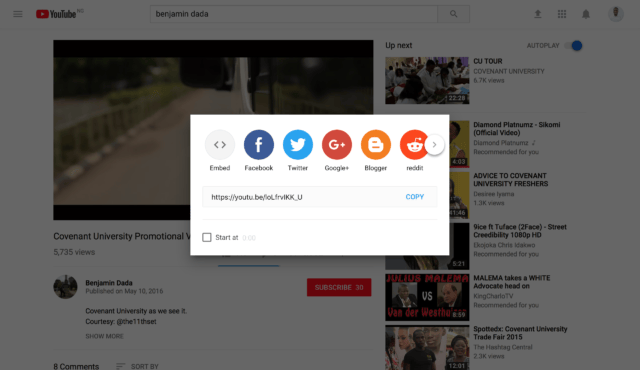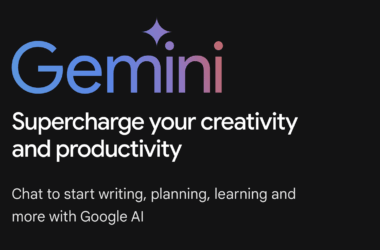About three weeks ago, I published an article on the 12 technology forces shaping our future which was written in line with a book by Kevin Kelly – The Inevitable: Understanding the 12 Technological Forces That Will Shape Our Future.
Our technologically future is filled with screens and cognitive computing. Sharing will reach an all time high. Habits will shift from ownership to access. It's interesting to watch.
Reading this will expose us to 2 of the 12 forces Kevin Kelly ideates on https://t.co/dQT7RCC3so
— Benjamin Dada (@DadaBen_) June 11, 2018
In that post, I shared my thoughts on two of them; Cognifying and Screening, then promised to highlight Sharing and Accessing in a future blog post, which is what you are reading now.
Sharing
If we agree that a major part of our technological future involves digitisation, where everything previously physical-only will now also be converted into digital formats, then we should already be noticing the force of sharing.
Digitalisation has bolstered the democratisation of digital goods and services. For instance, when I was a kid, I had to go to a movie rental outfit down the road to rent a Hollywood CD (Compact Disk). And the only way my neighbour could watch the same CD was to wait for me to be done watching it or to pay money to rent another CD. Thanks to the wear and tear that comes with removing and inserting the CD in multiple disk players, they do not last long. Eventually, interested viewers will still have to purchase their own CDs to watch the movie at their convenience.
However, now, with video-on-demand services like Netflix (subscription-based) and YouTube (free), my neighbour can watch the same movie (multiple times even) by just having my Netflix login details or simply having the link to a YouTube version (where available).
Almost every digital content and service now has a feature for “sharing”, perhaps, with just a difference in naming. For example, Uber (a ride-hailing service) calls her sharing feature “invite friends”. Youtube and many others simply call it “share”. Usually, the destination for these shareable items is social media. Hence, a lot of apps and services come with a “button” to easily share across platforms (see YouTube screenshot below).

Other previously licensed or commissioned items such as photos and graphic designs are increasingly becoming free. Stock photography sites like Unsplash make it free to download photos under the “Unsplash license“, a version of the Creative Commons-license.
Collaboration
A very vivid type of sharing involves collaboration. For instance, multiple Developers can work on the same project via code collaboration platforms like GitHub. So, I, as a developer can share my code with a friend and we can both come up with a web project. Likewise, as a business person, I can collaborate on a work-related document using Google docs, an online-first platform.
The effect of this is that other previously offline-only platforms will migrate online (what many refer to as the cloud) to foster sharing and collaboration e.g Desktop app, Microsoft Office suite having an online version.
Wikipedia as a platform was built on this tenet of collaboration with about 2,000 contributors to the site, it remains one of the top 5 sites in the world.
“Sharing will become collectivism”, Clay Shirky
Media theorist, Clay Shirky states that sharing will become collectivism in four stages, many of which we have already addressed in this article. They include:
- “simply sharing” digital goods,
- practicing “cooperation” via Creative Commons-type licensing
- using “collaboration” to streamline noncommercial projects, and
- enjoying people-powered “collectivism” to enhance personal autonomy and group effectiveness.
The outcome of collectivism is that there will be an improvement in services and productivity across industries.
Accessing
In 2017, a study once reported by the reputable Harvard Business Review on why Customers Won’t Pay as Much for Digital Goods reveals that when it comes to digital goods, the concept of ownership is changing. Kevin Kelly’s book corroborates that by arguing that, in a world of access (thanks to the internet), ownership matters less.
“We find that the key difference is that digital goods do not facilitate the same feeling of ownership that physical goods do”
This is because, with the advent of the internet (and digitalisation), users and organisations don’t need to own every good. Usually, they just need to be able to access them.
For instance, I can have a library filled with all the books in the Harry Potter series, without physically owning one. For me, I just need to be able to access them on my Kindle tablet whenever I choose to read. In the same vein, a private car hire company does not need to own (all) the cars. Think Uber.
Kevin argues that five trends are boosting the move towards access than ownership. Three of these trends will be listed below. They are Dematerialisation, Decentralisation and Clouds:
- Dematerialisation: Products improve by adding intangibles like algorithms (involving things like machine learning). For instance, instead of always having to go through my email inbox to see things I need to follow-up on, Gmail now sends me a reminder asking me if I want to follow-up or reply.

E.g “Received x days ago. Reply?”. Such innovation would have taken longer to come by in the days of physically posting every letter. Likewise, physical goods like owned cars have been transformed into intangibles accessed through an “app”.
While products improve by dematerialisation, it makes customers pay less for them because they can not “hold” them, so they never feel like they own them. Psychologically, we tend to inflate the value of things we “own”. - Decentralisation: One of the most recent examples of decentralisation is the Blockchain technology, where a product (e.g Bitcoin) is managed by its network and not by one central authority. Older examples include the Internet and Wikipedia, however, many have argued that there is a group of persons with more controlling powers. Decentralisation helps in transparency and accountability. Aspects of e-government, could make use of a decentralised network for conducting elections. Decentralisation also helps in reducing costs and ceding power to the users, thereby given them a sense of ownership which in turn drives their committment to the success of such product or network.
- Clouds: Already mentioned in this post, the concept of clouds brings with it the notions of collaboration and sharing, encourages access, back-ups and eases the demand on local devices. I do not think much of physical hard drives, because I can store all my files in DropBox. So, I can use my internal hard drive as just a “working memory”, which ultimately makes my laptop run smoother and faster.
In summary, from the first post, we saw how the tech forces of cognifying and screening have shaped and continue to shape our future. In this post, we showed how sharing and accessing was doing the same. All these, just help you the reader to be more aware of your technological environment and the changes thereof.
As an Amazon Associate, TechCity may earn a small commission if you shop these products.

















